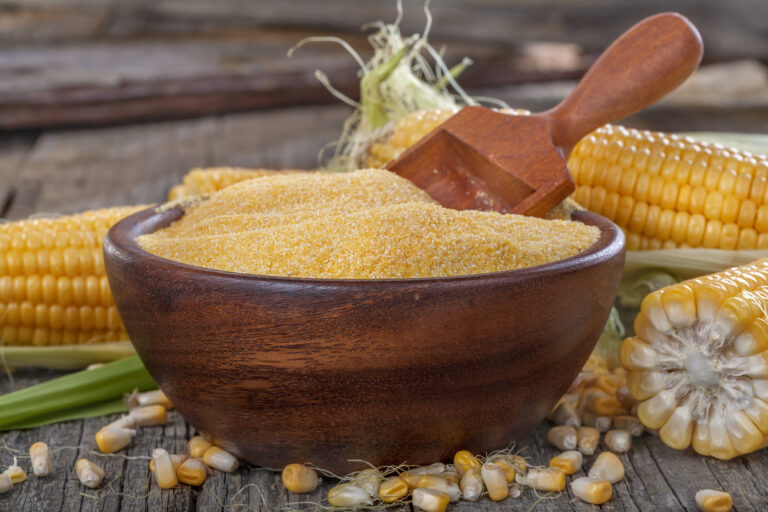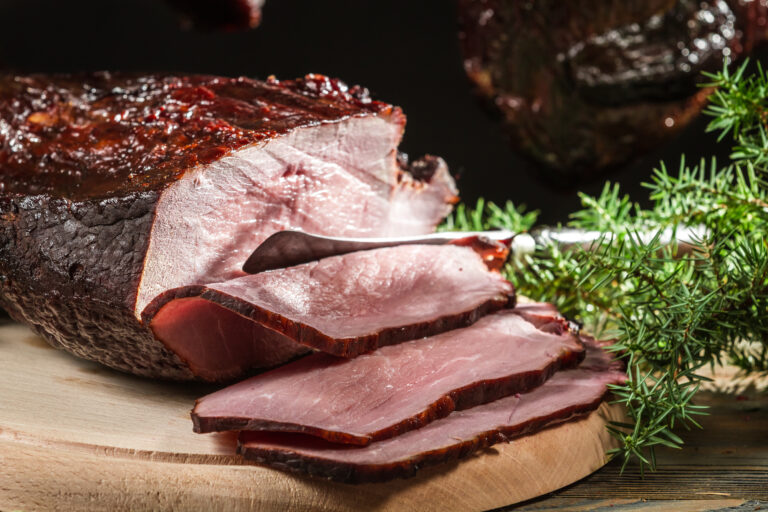Uncured Ham vs. Cured Ham: A Comprehensive Guide
The debate between uncured and cured varieties is a big one when exploring the world of ham. This detailed post will address every aspect of uncured ham vs cured ham, from their preparation methods and health implications to culinary uses.

The Basics of Ham: Understanding Uncured and Cured Varieties
1. What is Uncured Ham?
- Definition and Preparation: Often labeled as “fresh ham,” uncured ham is a cut of meat that hasn’t gone through the normal curing process. Unlike its cured counterparts, uncured ham uses natural preservatives like celery powder, which contains natural sources of nitrates. This method relies on natural curing processes involving ingredients such as sea salt, celery juice powder, and beet extracts.
- Health Perspective: Seen as a healthier alternative, uncured ham avoids synthetic nitrates, which are often linked to health risks. Natural ingredients like celery juice and sea salt make it a preferred choice for more health-conscious consumers.
2. What is Cured Ham?
- Traditional Methods: Cured ham undergoes a preservation process using chemicals like sodium nitrate and sodium nitrite. These ingredients are key in the normal curing process, aiding in maintaining the ham’s pink color and preventing bacterial growth.
- Curing Techniques: Curing can be done in different ways, such as wet curing and dry curing. Wet-cured hams involve soaking in or injecting a brine solution, while dry-cured hams are treated with a mix of salt and other seasonings and aged over a long time.

Key Differences and Considerations
- Preservation and Shelf Life: The biggest difference lies in their preservation methods and shelf life. Cured ham, due to synthetic nitrates, has a longer shelf life and is less susceptible to bacterial growth, while uncured ham, given its natural curing process, has a shorter shelf life.
- Flavor and Color: Uncured ham offers a different flavor profile, often milder and more reflective of the natural taste of pork. In contrast, cured ham has a pronounced salty flavor, and its use of sodium erythorbate or sodium nitrite keeps its pink color intact.
Culinary Uses and Preferences
- Cooking and Preparation: Cooking times for uncured ham are crucial, as it’s essentially raw ham and requires reaching a safe internal temperature. Cured ham, pre-cooked often, may only need reheating.
- Seasoning and Recipes: To enhance its flavor, you can season uncured ham with natural ingredients like maple syrup, brown sugar, and black pepper. Conversely, cured ham’s strong flavor from the traditional cured ham process may require less seasoning.
- Types and Cuts: Both uncured and cured hams come in various types, like deli ham, picnic hams, and the luxurious Iberian ham. They can be derived from different cuts of meat, including pork leg, pork belly, and pork tenderloin.
- Serving and Pairing: Uncured ham, with its natural method and subtle flavors, is a good option for those seeking a more authentic pork taste. Cured ham, such as Canadian bacon (such as this one from Serious Eats), prosciutto, or black forest ham, is a staple in deli meats and is ideal for sandwiches and charcuterie boards.

Healthier Alternatives and Safety
- Natural vs. Synthetic: The debate often centers around natural vs. synthetic preservation methods. Natural curing processes using celery juice or beet extracts are seen as safer alternatives to traditional methods using synthetic nitrates.
- Food Safety: Regardless of type, food safety is paramount. Ensure uncured ham is cooked to the appropriate internal temperature to mitigate risks associated with bacterial growth.
Shopping and Storage Tips
- Purchasing Tips: You can find both uncured and cured hams at your local grocery store. Uncured varieties are often more prevalent in whole foods markets or health-focused stores.
- Storage Practices: Store ham in airtight containers to extend its shelf life. Remember that uncured ham may have a shorter shelf life than cured ham due to the absence of synthetic preservatives.
In-Depth Look at Uncured Ham
- Natural Ingredients: The hallmark of uncured ham is its use of natural ingredients like celery powder, a natural nitrous source. This preserves the ham and keeps it free from synthetic chemicals.
- Culinary Flexibility: Uncured ham offers a canvas for various seasonings and flavors. It’s ideal for those who prefer a more natural pork flavor and enjoy experimenting with different herbs and spices.
- Storage and Shelf Life: Uncured ham has a shorter shelf life without the preservatives used in cured ham. Proper storage in airtight containers and refrigeration is crucial to maintaining its quality.

Choosing between uncured and cured ham depends on individual preferences, health considerations, and culinary needs. While uncured ham offers a more natural flavor and is free from synthetic preservatives, cured ham provides a distinct taste and a longer shelf life.
Both types have their unique place and can be enjoyed in various dishes. Remember to prioritize food safety, savor the different flavors, and explore the diverse world of ham. Whether you’re preparing a simple recipe or a feast, understanding these key differences will enhance your cooking experience and allow you to make the best choice for your table.
Add some jalapeño cornbread on the side of ham.





